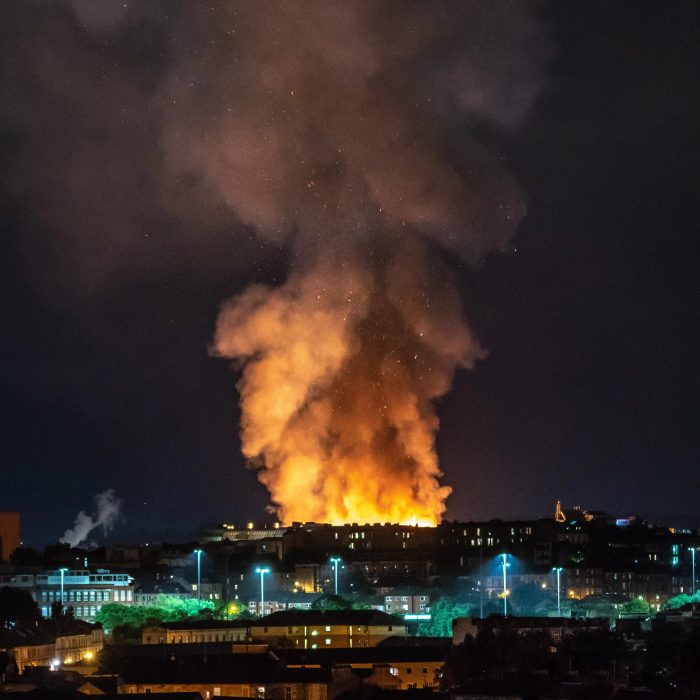
- Permbajtja
- prev
- next
- prev
- next
The Glasgow School of Art
by Rei Goga, "Thresholds of XX century architecture" EPOKA University
The Glasgow School of Art was established in 1845 and was originally known as the Glasgow Government School of Design. The school moved to the McLellan Galleries in Sauchiehall Street in 1869 from its original location at 12 Ingram Street. With a contribution of £10,000 from the Bellahouston Trust, established by Moses Stevens off Bellahouston's will, construction on a new structure to house the school on Renfrew Street began in 1897. Charles Rennie Mackintosh was selected for the commission by Francis Newbery, the school's director, who supervised a time of development and rapidly escalating reputation. The structure's first half was finished in 1899, and its second half in 1909.
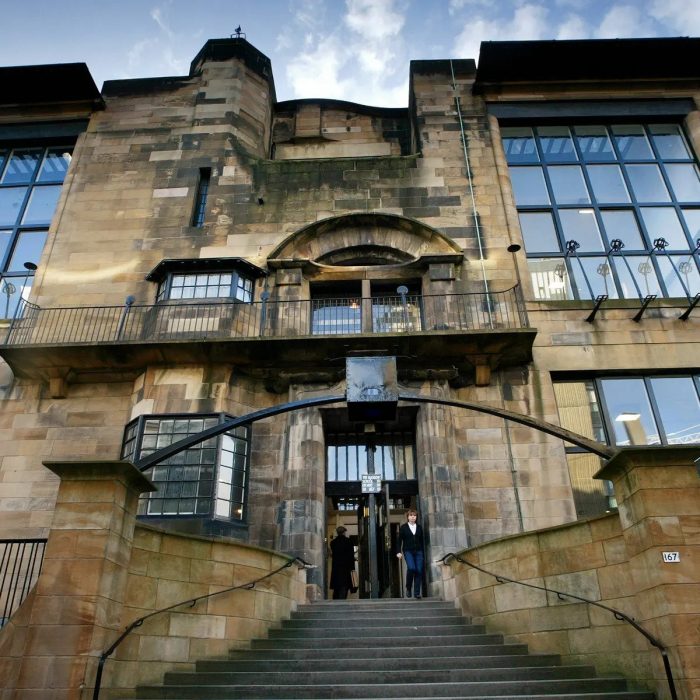
1.1 Charles Rennie Mackintosh’s life and work
Charles Rennie Mackintosh was a Scottish architect, designer, water colorist, and artist who lived from 7 June 1868 to 10 December 1928. His creative style was quite similar to European symbolism. Great modernists like Josef Hoffmann appreciated his work, which along with the work of his wife Margaret Macdonald, had a significant impact on European design trends including Art Nouveau and Secessionism. Mackintosh was a Glasgow native who passed away in London. He is one of the key figures of Modern Style, British Art Nouveau style. Mackintosh began his career in architecture in 1884 in Glasgow as an apprentice to John Hutchinson. He also spent his nights studying at the Glasgow School of Art, which was then located on Sauchiehall Street, where he eventually won several awards. He began working as a draftsman and designer for the renowned architectural firm Honeyman & Keppie in 1889. In 1901, he was made partner.
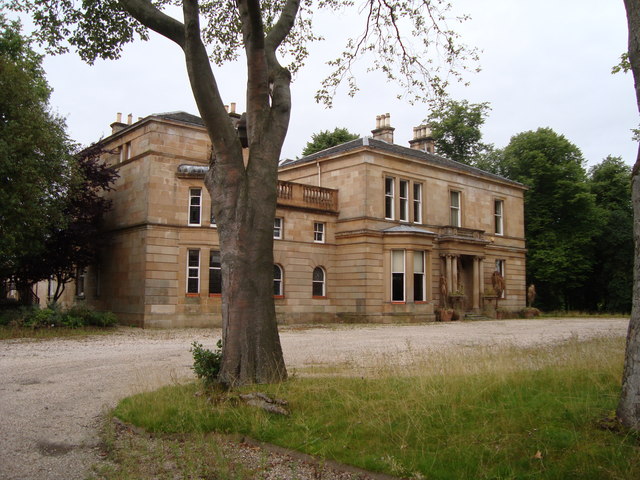
His first design work, for which he signed the plans, may be seen in the interior of Craigie Hall, Dumbreck, as well as in the new saloon and gallery of Glasgow Art Club, 185 Bath Street.
In the same fashion with Vienna cessation erupting from the industrial revolution, Mackintosh was deeply inspired by the revolution because he also lived most of his life in Glasgow. One of the largest global industrial hubs for heavy engineering and shipbuilding was in Glasgow throughout the Industrial Revolution. A quicker reaction was required to meet the enormous demand for consumer products and the arts as the city expanded and developed. Mackintosh's designs were not only influenced by the Industrial Revolution but also Asian design, and newly popular modernist theories. Japanese influence may be observed all over the world as a result of the isolationist regime's softening and recent globalization. Japanese design became more widely available and extremely popular. In fact, it was so widely revered that it was frequently imitated by Western artists giving it the new name Japonisme or Japonism. This was born out of the West's passion and obsession with Japanese art.
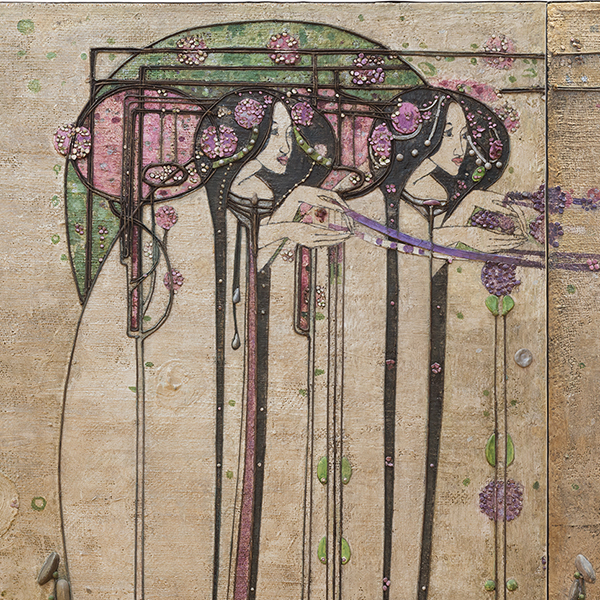
Mackintosh loved this style for its restraint and economy of means rather than extravagant accumulation; its basic shapes and natural materials rather than adornment and pattern, and its use of texture, light, and shadow. In the traditional western aesthetic, furniture was viewed as a status symbol that revealed the riches of its owner; the piece's value was determined by the amount of time it took to make it.
In Japanese art, the quality of the place was prioritized, with furniture and interior design intended to produce a serene and natural sense. While practicing design, Charles Rennie Mackintosh created his own distinctive style, which contrasts sharp straight angles with delicately curved ornamental patterns inspired by flowers (such as the Mackintosh Rose motif) and some nods to traditional Scottish architecture.
1.2 Mackintosh’s later life
Disenchanted with building in his latter years, Mackintosh focused mostly on watercolor painting, creating a great number of landscapes and flower studies. In 1914, the couple relocated to the Suffolk community of Walberswick. During World War I, Mackintosh was temporarily detained on the grounds that he was a German spy.
The Mackintoshes relocated to Port Vendres around 1923, a warm-weathered Mediterranean beach town in southern France that was a comparably less expensive place to reside. In favor of watercolor painting, Mackintosh had completely given up on building and design.
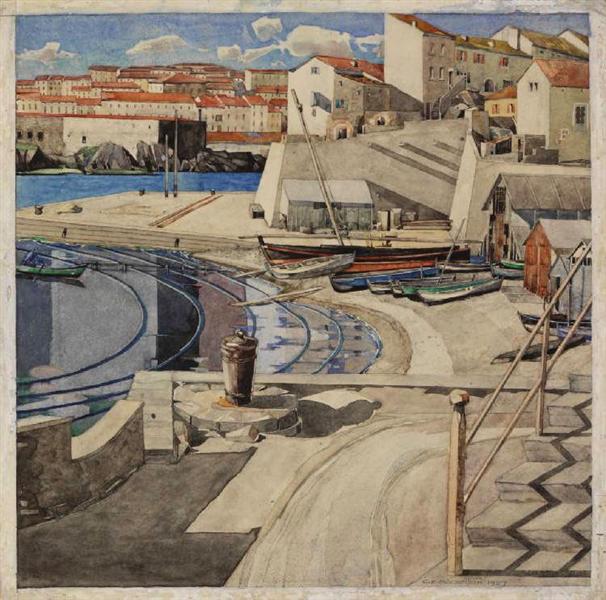
2.1 The Art of Glasgow school of Art
"An art school, a unique setting to educate beauty, where you may become an artist."
For well over a century, art students could learn at the Glasgow School of Art. Charles Rennie Mackintosh, an architect with design and painting training, created it, giving it its uniqueness. Charles was thirty years old and a leading figure in contemporary British art nouveau when, with the help of his friend, the director, he was able to win the contest to create this school of art. His graphic works, which combined organic forms and geometric motifs with other inspirations like symbolism and japonism, are what gave him his notoriety."An art school, a unique setting to educate beauty, where you may become an artist. At the time, this fashion was quite popular in Europe, where it also earned acronyms like "New Year" or "Noodle Art”.

Mackintosh was also well known for the furniture he designed for the elite class of the city, unique pieces conceived as works of art.
At the end of the nineteenth century Glasgow was strong and prosperous with its shipyards being the largest in the world. The city was also home to some of the worst slums in Europe. Having developed strictly in the industrial direction, Glasgow wanted to change. To compensate for the lack of universities and art schools, Glasgow aimed to revolutionize the cultural ambition to match its industrial one but that was not enough because its society was hesitant.
A donor kindly gave a piece of land to create the new school of art; the funds raised from the city to do so were, to put it mildly, meager. However, this piece of property is situated on a sharp hill in the middle of Glasgow, and the only area that could be used for construction was a rectangle that was 75 meters long and 30 meters broad. Mackintosh was forced to create a structure with an entirely reversed main face because to the arrangement of the figure ground.
In order to offset this austerity, Mackintosh chose to embellish the front with cast iron pieces whose twists culminate in flower buds, a highly important organic feature in Art Nouveau and fairly unusual for the time period.

Regarding their application, these fragile brackets did cause some discussion. Others posited other theories, while some regarded them as supporting the window cleaners. Although the metalwork accents that can be seen throughout the exterior give the impression that they are structural components, the architect only intended for them to serve as ornamental features, giving the facade a sense of vibrancy and fantasy. This easily understandable daydream was classified as aberrant behavior and, much to the sponsors' dismay, ate up a significant portion of the money.
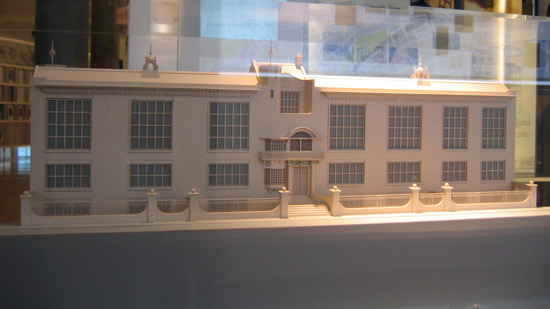
Mackintosh's architectural offer has withstood cultural upheavals. The main staircase that serves all floors of the school is located in a central block in the back of the building.The degree of attention to detail the architect gave while building this project is seen in the small and ominous stairs. This staircase might be better described as a forest of enormous ballast rods and poles, all arranged to accentuate verticality. This complex design is reminiscent of the interiors of traditional Japanese homes. Like the cast iron components of the exterior, the design features that give this staircase its unique feel are simply aesthetic in nature. To top it all off, Mackintosh added four corner poles that rose over nine meters high and provided no support to his impressive illusion.
Once the school's curriculum was well-aligned with the parameters of the brief, Mackintosh created the office front in the style of a Scottish medieval castle. About 10 years later, the other gable end was completed, showing a significant shift in the architect's style. The angular, elongated windows' firmness gives off a decidedly contemporary appearance.
The Glasgow school of Art is to this day a memory of great architectural development, a resemblance of art and industrialism, a rigid complex gathering of beautifully functional illusions.
2.2 A journey short lived between two fires
On the twenty third of May 2014 a fire tore through the school. Most of the school was destroyed due to the fact that the primary materials used within the building were wood or plaster derivatives. After the firefighters contained most of the fire they confirmed that the library designed by Mackintosh burned down.

In 2016 there were plans for a major expansion of the Garnethill campus. Within the same year a restoration contract was awarded. Within the same year restoration started and by 2018 a full size prototype was created before work began on site. Four years after the first devastating fire, the Glasgow school of Art faces another blaze. This time damage to the building was exceptionally significant.
